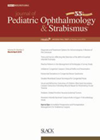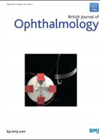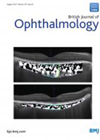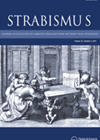Use of orthoK for myopia treatment
This article provides an updated literature review on the orthkeratology effect on myopia progression considering outcome measures, potential effect modifiers, mechanisms and current prescription concerns. The discussion centres on the extent of slowed myopia progression, mechanisms, safety concerns and comparisons...
OCT measures of lateral and medial recti
The authors assessed the agreement of the measurements of the horizontal rectus muscle insertion distance to the limbus and the muscle thickness between three different OCT devices. This was a cross section observation study of 70 eyes of 35 subjects....
Screening to detect high hyperopia
The purpose of this study was to compare the effectiveness of the plus lens test versus the Spot vision screener. This was a prospective study and 109 children aged two to 12 years (62% female) underwent both assessments followed by...
Treatment of Type 1 ROP with intravitreal bevacizumab or laser photocoagulation according to retinal zone
This is a retrospective review of charts of 54 consecutive very low birth weight (VLBW) infants between June 2011 and January 2015 from Berlin, Germany. Type 1 ROP (posterior ROP, n=33; peripheral zone 2, n= 21) were treated with either...
IAC vs. IVC chemotherapy for RB
This a single centre retrospective review of consecutive patients between 1997 and 2014, of all sporadic unilateral retinoblastoma (RB) group D cases, treated with combined intravenous chemotherapy (IVC) and focal treatments (1997- 2008), or intra-arterial chemotherapy (IAC) treatment (2008 to...
IXT control vs. binocular summation
The purpose of this study was to evaluate the relationship of BS scores with other current markers used for evaluating the control in preoperative intermittent exotropia (IXT) patients. Data was collected on stereoacuity, angle of deviation, Newcastle control score (NCS),...
Trochleitis features
The authors evaluate the epidemiology, clinical signs, treatment and outcomes of trochleitis in a retrospective review of 59 cases. Estimated prevalence was 12 per 100,000. Eighty-six percent were female and mean age was 43±18 years. All but one case was...
Stereo distance in XT
The test distance effect on stereoacuity was explored in a population with intermittent exotropia along with use of two types of stereograms with crossed and uncrossed disparity. At near and distance distances, the median for both disparities was 60”; 79%...
GP contact lenses in nystagmus
The purpose of this study was to quantify and evaluate the effect of rigid gas permeable contact lenses (CLs) on visual acuity, contrast sensitivity and motor parameters of involuntary eye movements in hyperopic patients with infantile nystagmus syndrome (INS). This...
Reducing myopia progression
This paper reports a literature review to discuss the environmental considerations and treatment options that can prevent the progression of myopia, including time spent outdoors, reduction of near vision activities, spectacle types, contact lens type and pharmacological treatment. The review...
PROM rating scales
The authors evaluated three commonly used Likert-type rating scales with an aim to determine which scale performed best when administering questions to children with eye disorders, and their parents. Three scales looked at frequency, severity and difficulty. An initial questionnaire...
N-T asymmetry in tracking eye movements
The current study aimed to quantify and compare the visual tracking responses of two sensory induced strabismic juvenile monkeys during monocular smooth pursuit, ocular following response and optokinetic nystagmus (OKN). Monkey 1 had esotropia and monkey 2 had exotropia. Both...









